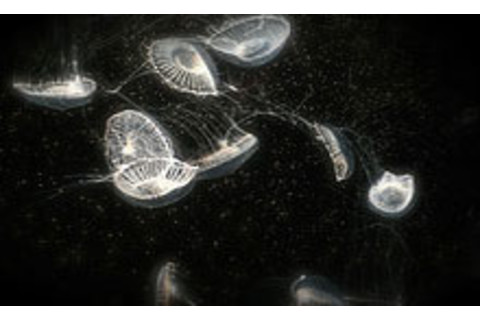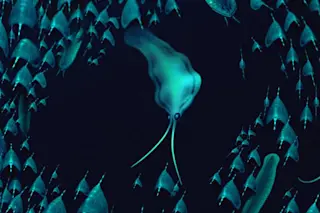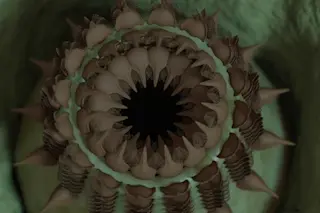
Three researchers who worked on a fluorescent protein found in jellyfish and developed it into a standard laboratory tool have been awarded the Nobel Prize in chemistry, the prize committee announced today. The three researchers, Osamu Shimomura, Martin Chalfie, and Roger Tsien, worked separately to first isolate the protein, which glows brightly when exposed to ultraviolet light, and then to develop ways to use it as a luminescent marker in the cells of other organisms.
Said the prize committee: "The remarkable brightly glowing green fluorescent protein, GFP, was first observed in the beautiful jellyfish, Aequorea victoria in 1962.... Since then, this protein has become one of the most important tools used in contemporary bioscience. With the aid of GFP, researchers have developed ways to watch processes that were previously invisible, such as the development of nerve cells in the brain or how cancer cells spread" [Reuters].
Shimomura began the work when he discovered the protein in jellyfish drifting off the west coast of North America.
He also discovered the chemistry that jellyfish use to glow, or bioluminesce. Chalfie ... realized the protein was more than a curiosity and could be used as a tag to track and study cells, going on to develop the gene for GFP as a biological tag. He demonstrated its usefulness by coloring six cells in the nematode Caenorhabditis elegans [Science News].
Finally, Tsien discovered how to make the protein glow in colors other than green so that researchers could track a number of different biological processes simultaneously. GFP has been used not just to study disease, but also to track changes introduced through genetic engineering.
Scientists trying to modify a plant or animal will often include the gene responsible for GFP as part of the change. Fluorescence will then tell them if the modification has been taken up successfully or not, dramatically improving the efficiency of the research. It is this science which has led to the stream of popular media stories down the years of "glowing" rabbits, butterflies, pigs - and all the other green-tinged animals to emerge from laboratories [BBC News].
Related Content: 80beats: Nobel Prize in Physics Awarded to Particle Physicists 80beats: Nobel Prize for Medicine Awarded to Virus Hunters
Image: flickr/CorruptKitten













